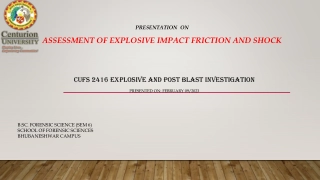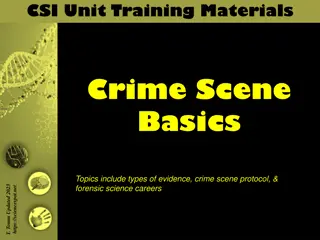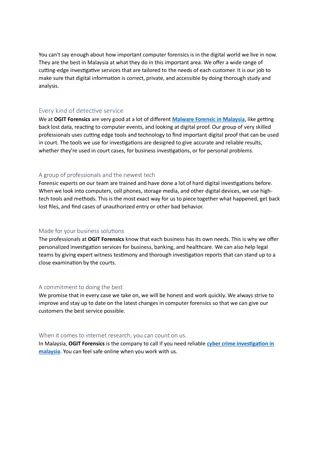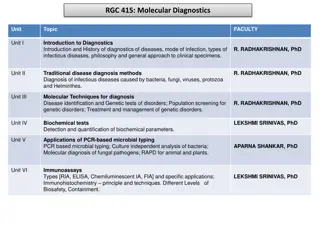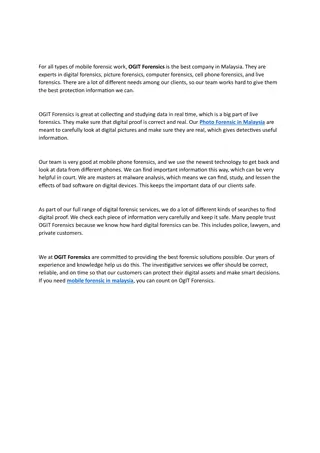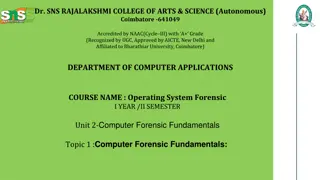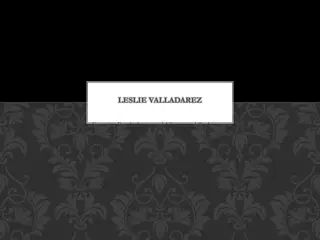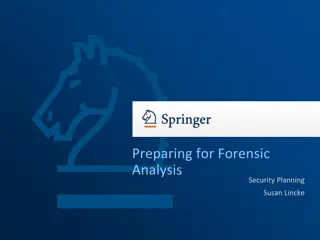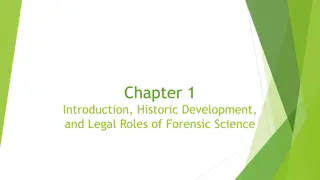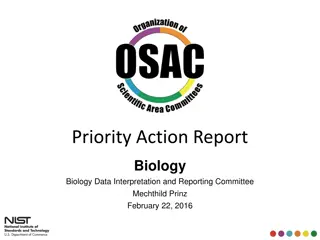
Financial Debacles: Lessons from Enron, Metalgesellschaft, and LTCM
Explore the forensic finance cases of Enron, Metalgesellschaft (MG), and Long-Term Capital Management (LTCM) to uncover valuable lessons in risk management, hedging strategies, and the dangers of excessive leverage in financial markets.
Download Presentation

Please find below an Image/Link to download the presentation.
The content on the website is provided AS IS for your information and personal use only. It may not be sold, licensed, or shared on other websites without obtaining consent from the author. If you encounter any issues during the download, it is possible that the publisher has removed the file from their server.
You are allowed to download the files provided on this website for personal or commercial use, subject to the condition that they are used lawfully. All files are the property of their respective owners.
The content on the website is provided AS IS for your information and personal use only. It may not be sold, licensed, or shared on other websites without obtaining consent from the author.
E N D
Presentation Transcript
1 Forensic Finance: ENRON and Others Stephen A. Ross Presented by Edwin Hung
Metalgesellschaft (MG) 2 In early 1990 s, an oil trader team from MG pursued a flawed hedging strategy short position on oil and petroleum long-term forward contact with embedded options for the buyers, and long position on short-term futures (rolling over). As oil prices fell and market went into contango in 1992, margin call for $1 billion. MG almost bankrupted
Autopsy of MG case 3 Premise Before 1990, 70% of time oil futures market were in backwardation From pure accounting perspective, delivery commitments were perfectly hedged by futures contracts. Lessons 1. Blind allegiance to a particular theory or strategy is central feature of financial debacles. 2. Bad things happen that were not anticipated by the theory Oil prices fell 50% in months and margin call for $1 billion Interest charge for financing won t be covered 10 years from now Considering interest cost and near and far term volatilities of oil futures, this strategy is riskier than no hedge.
Lessons continue 4 3. Simple strategies are doomed to failure in efficient market. 4. Big dollars attract big attention With MG s large short position, specialist in oil markets knew MG had to roll over their positions. 5. In times of distress, liquid debts always beat illiquid assets 6. Complexity of the business creates opacity and vulnerability; it s hard for business to finance and control risks. 7. Agency cost failure to align interest will add burden on monitoring and controlling employees.
Hedge Funds - 1998 5 In the summer and fall of 1998, a number of hedge funds blew up, including the most famous one, Long Term Capital Management (LTCM). Most followed a strategy called convergence trading whenever the spread between two apparently equivalent positions gets larger, the strategy attempts to bet on them reverting to historical norms. In that volatile period, the spread widened, and losses bankrupted many funds.
Hedge Funds - Lessons 6 This strategy is the theory just like MG case LTCM had positions of over $100 billion, leverage of about 25 to 1 and nominal footing of over $1 trillion (again, big dollar attracts attention) In times of crisis, liquid debts are king assets and position holdings may be marked-to-market, but debts are contractually stated. Hedge funds are the most opaque of financial institutions LTCM had over 70,000 positions Hedge fund fee aligns incentives, but monitoring and control are still required. Misalignment of fees grew severe after 1998 New lesson: leverage is risky and big leverage is dangerous Leverage strains the assumptions that underpin any systems, models and theories LTCM s 25 to 1 leverage makes controlling risks by mathematical pricing model troublesome
ENRON 7 Acquired assets or businesses where trading markets are bilateral and not well established, which began with energy business, then to internet, telecommunications, steel, and others Objective: modernize the markets by introducing financial instruments and derivatives for trading and hedging. Buy a stake at target market BADCO Buy from Enron Or hedge risks Offshore SPV BADCO NEWCO Off books Retain control and Guarantee no loss
ENRON - Lessons 8 Theory : continue profit by making inefficient markets efficient. Aggressive accounting technique kept losses and risks off ENRON s balance sheet, so there was no bad news for its stock price. Bad things happened in1990 s: US stock markets collapsed, bringing down ENRON and its other ventures value. Leverage and bad news accelerated the fall. ENRON grown to be one of the largest companies in valuation with over 20,000 employees, and its shares were held by most institutional investors. BADCOs were illiquid investments, and creditors demanded their money back
ENRON Lessons continue 9 ENRON s intricate accounting and financing structures were opaque. Financing SPV s with ENRON stock is a type of leverage. As SPV s assets fall, the call on additional ENRON shares accelerate the decline in ENRON stock price Agency issue was the main culprit of ENRON s demise
ENRON and Agency Costs 10 There is a combination of three ways to deal with agency problems 1. Monitoring: external auditors must be economically independent; internal audits should also be independent but impossible unless internal auditors and risk monitors report directly to the board of company without interference from management Legal advisors, both inside and outside, also perform monitoring but in conflicted positions when advising senior management 2. Incentives have to be aligned: in ENRON case, managers can profit from their outside holdings in SPV s that do business with the company. 3. Managers have to be controlled: The board of ENRON was asked to suspend corporate code of ethics to permit some SPV structuring with management having stakes; ENRON s board heavily relied on management
Agency Problems 11 (when the paper was written) There was no study that shows clearly that independent director enhance company performance; they always have limited knowledge of workings in company, comparing to management Then, the greatest asset of Board would be their ability to judge integrity and competence of management Finally, the last solution to a failure of corporate control to deal with agency issues is the market and the market for corporate control. If a company is broken and devalued, the cheap company becomes a target company. This is a costly solution to a malfunctioning company, so internal corporate controls (aligning incentives and monitoring) are much more efficient
Implications for Regulation 12 The lessons we learned are not to prevent companies from failing, but serve as a set of indicators for companies and investors to assess vulnerabilities of ventures Sarbanes-Oxley bill was passed to respond ENRON collapse as well as Worldcom and TYCO. Though there is much value in this kind of legislation, the statutes are often structured in some haste in the form of prohibiting certain activities, which should be wary of. The bill prohibits a range of services provided by auditing firms to prevent them tying to close to clients and becoming passive captives. However, auditing firms acquire mush expertise about the companies that they audit. Preventing such services is not efficient.
Example of Inefficiency 13 $5 million audit $20 million consulting Audit Consulting Client Audit Client Consulting
14 If a auditing firm no longer offers consulting services, the auditing group in the firm will be smaller and more under pressure than typical firm before the legislation. The point is that following dramatic financial events, there can be no clear evidence that the new regulation will improve functioning of capital markets, but we know it establishes further barriers to entry and increases costs of doing business. A problem with accounting: in U.S. if there is a problem, it can be solved with more laws and regulations. As the consequence of increased visibility and activity in tort lawsuits, experts no longer give opinions based on judgement but seek statutes.
Conclusion 15 In financial history, companies died to tell their stories, and our analysis provides questions to assess business ventures health Dramatic incidents are main driver for regulatory and legal changes. Hasting to take actions is often not well though out. No matter how big the financial failures are, it would be wrong to jump to conclusion that the system needs radical overhaul.

